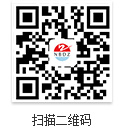The year 2017 is a crucial year for implementing the "13th Five-Year Plan" in an all-round way and also a key year for China's foreign trade to achieve the goal of improving and enhancing efficiency. In the first 11 months of 2017, China's textile and apparel exports have been on a steady track. According to customs statistics, the trade volume of textile and garment between January and November 2017 reached 266.97 billion U.S. dollars, up 1.1%. Among them, the export was 244.58 billion U.S. dollars, up by 0.6 percent; the import was 22.39 billion U.S. dollars, up 6 percent, and the cumulative trade surplus was 221.29 billion U.S. dollars, up 0.1 percent. Cao Jiachang, president of China Chamber of Commerce for Import and Export of Textiles, predicts that in 2018, China's textile and apparel exports will be flat or slightly increase from 2017, and the annual export growth will be within 5%.
Good multi-factor textile and garment exports
"2018, the Fed there is interest rate hike expectations, which will allow the dollar to gradually strengthen, for China's textile and apparel exports is a positive factor for China Textile Import and Export Chamber of Commerce that the 2018 export situation should remain cautiously optimistic forecast, the main From: First, the overall situation of global trade did not show a clear turnaround; Second, the accelerated trend of industrial transfer, domestic enterprises overseas factories and overseas orders have increased; Third, the gradual improvement of the industrial chain in Southeast Asian countries, the domestic fabric export pressure Increase. "Caojia Chang said.
Cao Jiachang pointed out that as the world's largest textile and apparel industry organization and a member of the Executive Committee of the International Garment Federation, China Textile Import and Export Chamber of Commerce has signed memorandums of cooperation with industry organizations in 42 countries and regions and conducted fruitful exchanges. "China Chamber of Commerce for Import and Export of Textiles will earnestly study and implement the spirit of the '19 National Congress, 'take the socialist ideology with Chinese characteristics in the new era as a guideline, adhere to deepen the reform in an all-round way and adhere to the concept of new development. Together with people from all walks of life and industry colleagues, we will promote the textile The transformation and upgrading of apparel industry and its innovation and development, and continue to take advantage of its own advantages to provide better and better services to enterprises in exhibitions, international forums, industry docking, personnel training, legal aid and information exchange, "said Cao Jiachang.
Textile and garment export opportunities and challenges co-exist
At present, China's textile and garment exports face many problems. "First of all, trade friction cases have increased since 2017. Foreign relief measures and trade barriers against China's textile and apparel trade have been surging since 2017, and the external situation in the textile and apparel trade has become grim. As of October 2017, Launched 11 trade remedy investigations, the number of cases increased by 37%, the amount involved reached 490 million US dollars, an increase of 53% .Second, the RMB appreciation and volatility.Since May 2017, the RMB continued to rise against the dollar, in September more Is setting a new high since 2015. Although the exchange rate of RMB has stabilized since mid-September, the fluctuation of the RMB exchange rate undoubtedly provoked their sensitive nerves to textile and garment export enterprises. Appreciation of the RMB reduces the competitiveness of our textile and clothing , Sharp fluctuations in exchange rates have caused foreign exchange losses to businesses and increased financial costs.Third, labor costs and labor shortage have also risen.China's monthly minimum wage has risen by more than 15% annually in recent years.Our labor costs have risen in the past 10 years 3 times more than the current cost of the textile industry in the coastal areas have more than 40 per month 00 yuan, Vietnam, Bangladesh, Myanmar and other countries 3 to 6 times.Finally, the export credit coverage needs to be improved.For large and medium-sized textile enterprises, the coverage of the company's business credit coverage is about 70%, there are still 30% Of emerging-market businesses can not be insured, SME business coverage of credit coverage will be lower credit guarantee coverage of the decline in medium and large enterprises in the development of new markets and new customers have been restricted, and SMEs in the above-mentioned impact also Will face the problem of financing difficulties.Insurance tightening, mainly due to the decline in customer credit in Europe and the United States in recent years, frequent cases of credit insurance and other aspects, so that the amount of corporate credit to reduce. "Caojia Chang said.
Although China's textile and garment exports face many problems, there are still many opportunities. Cao Jiachang believes that the "Belt and Road Initiative" will effectively strengthen China's core position in the textile and apparel supply chain in Asia and the world at large. With the deepening of capacity-building cooperation between China and its neighboring countries, Asia has formed a complete industrial chain with China as the center, which not only promoted Asian countries' garment exports to developed countries and China's huge consumer market, but also promoted the development of yarn in Asian countries Line and fabric trade. At the same time, we should also see that a considerable part of the export growth in the neighboring countries is created by Chinese enterprises, and supply chains and orders are still in the hands of Chinese enterprises.
"The structural changes in the international market have provided new opportunities for Chinese enterprises.Under the tide of new technologies, the international textile and apparel consumption and market structure underwent structural changes. The rapid development of the e-commerce giant such as Amazon, the traditional retail Has been a huge challenge, fast fashion and even the 'ultra-fast fashion' brand rapid rise, niche designer brand, custom brand rise, the rapid expansion of cross-border e-commerce scale, consumer preferences and purchasing behavior with each passing day, orders personalized, customized, The tendency of fragmentation and the prevalence of "moral procurement" all put forward higher requirements on suppliers' ability to respond rapidly, integrate resources and fulfill their social responsibilities, and provide new impetus to Chinese enterprises in their international competition Opportunity In the medium to long term, middle and high-end orders and fashion orders requiring complex workmanship and rapid response still remain in China, "said Cao.
In addition, Xinjiang, Henan and other central and western regions are actively undertaking the industrial transfer in the eastern region to provide strong support for the manufacturing industry to stay in the country. In order to maintain the stable development of China's foreign trade, in the first half of last year, the government introduced a package of encouraging policies to undertake the industrial transfer in the eastern coastal areas in the central and western regions and ordered the transfer of processing trade industries from the eastern coastal areas to the central and western regions. In Xinjiang and Henan, Resources and labor advantages, as well as generous preferential policies, excellent geographical location, become a hot investment in domestic textile enterprises. "Cao Caichang said.


 Mr. Chen Fei (Mr.)
Mr. Chen Fei (Mr.) 86-574-63550733
86-574-63550733 86-574-63551022
86-574-63551022 dz@dzfibre.cn
dz@dzfibre.cn



